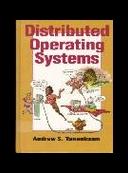Книга: Distributed operating systems
9.5.2. Extensions to UNIX
9.5.2. Extensions to UNIX
Chorus provides UNIX processes with many extensions to make distributed programming easier. Most of these are just standard Chorus properties that are made visible. For example, UNIX processes can create and destroy new threads using the Chorus threads package. These threads run in quasiparallel (on a multiprocessor, actually in parallel).
Since Chorus threads are managed by the kernel, when one thread blocks, for example on a system call, the kernel is able to schedule and run another thread in the same process. However, it is not usually possible for two threads in the same process to execute most system calls simultaneously because the ancient UNIX code that handles the system calls is not reentrant. In most cases, the second thread is suspended transparently before starting the system call until the first one has completed.
The addition of threads has necessitated rethinking how signals are handled. Instead of all signal handlers being common to the entire process, the synchronous ones (the ones caused by a thread action) are associated with specific threads whereas the asynchronous ones (like the user hitting the DEL key) are process wide. For example, the ALARM system call arranges for the calling thread to be interrupted after the indicated number of seconds. Other threads are not affected.
Similarly, one thread can arrange to catch floating-point overflows and similar exceptions, while another ignores them, and a third thread does not catch them (meaning that it will be killed if one occurs).
Other signals are, by nature, not specific to one thread. A kill signal sent by another process, or a SIGINT or SIGQUIT from the keyboard are sent to all threads. Each one can catch or ignore it as it wishes. If no thread catches or ignores a signal, the entire process is killed.
Signals are handled by the process itself. Associated with every UNIX process is a control thread within the UNIX subsystem that spends its day listening to the exception port. When a signal is triggered, this normally dormant thread is awakened. The thread then gets the message sent to the control port, examines its internal tables, and performs the required action, namely interrupting the appropriate thread or threads.
A third area in which UNIX has been extended is in making it distributed. It is possible for a process to make a system call to indicate that new processes are not to be created on the local machine, but on a specific remote machine. When a new process is forked off, it starts on the same machine as the parent process, but when it does an EXEC system call, the new process is started on the remote machine.
User processes using the UNIX subsystem can create ports and port groups and send and receive messages, like any other Chorus processes. They can also create regions and map segments onto them. In general, all the Chorus facilities related to process management, memory management, and interprocess communication are available to UNIX processes as well.
- Межпроцессное взаимодействие в BSD UNIX. Сокеты
- 18.2. Стиль Unix
- Table D-4. Programming languages, version control, and customization sites
- Глава 1 UNIX для начинающих
- ЧАСТЬ 1 ВВЕДЕНИЕ В IPC UNIX
- Using the Common UNIX Printing System GUI
- UNIX Security Considerations
- Using DNS Security Extensions
- Как не следует делать это - C-Unix пример
- ГЛАВА 1 Обзор средств взаимодействия процессов Unix
- 8.1.4. The Mach BSD UNIX Server
- 8.5. UNIX EMULATION IN MACH




